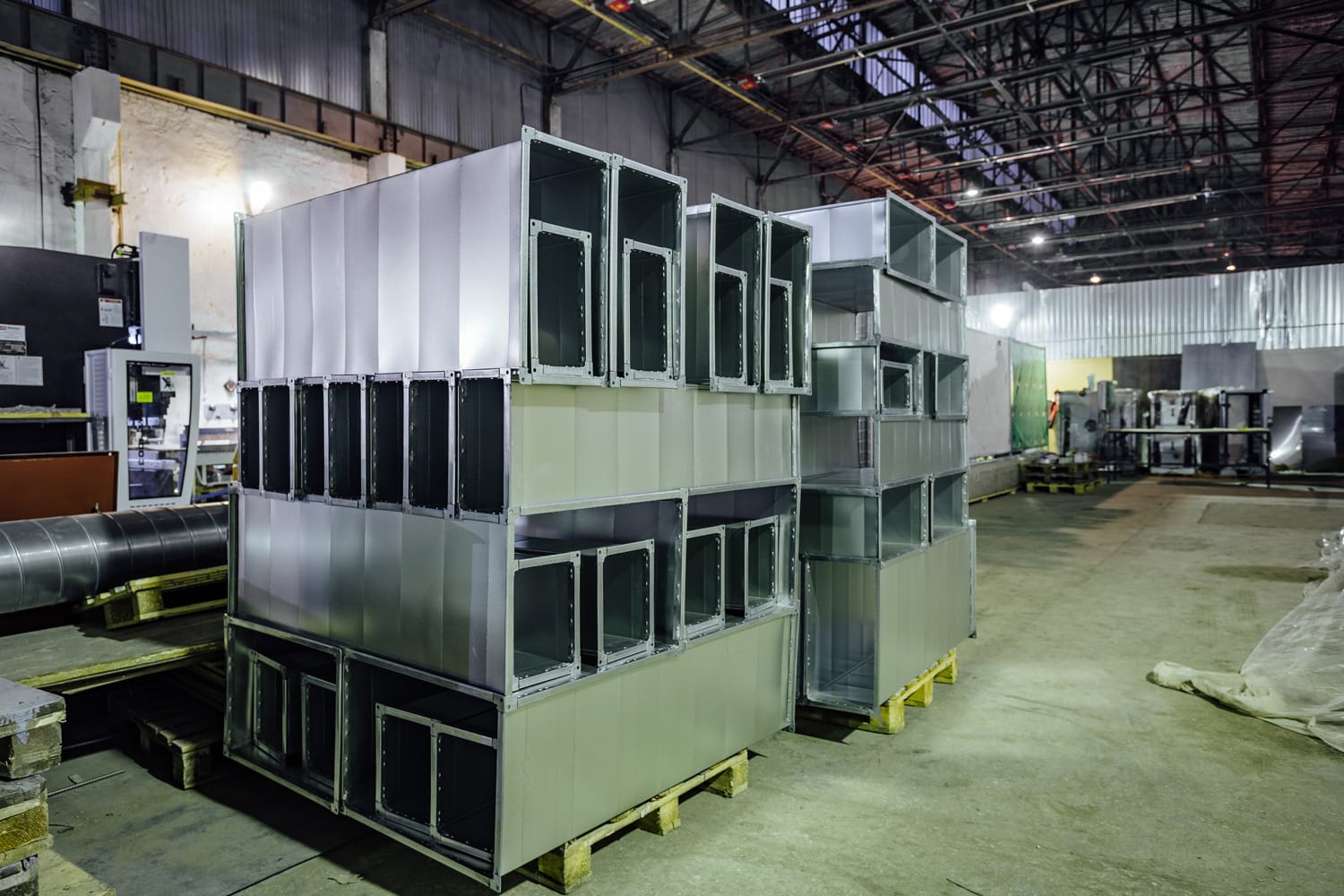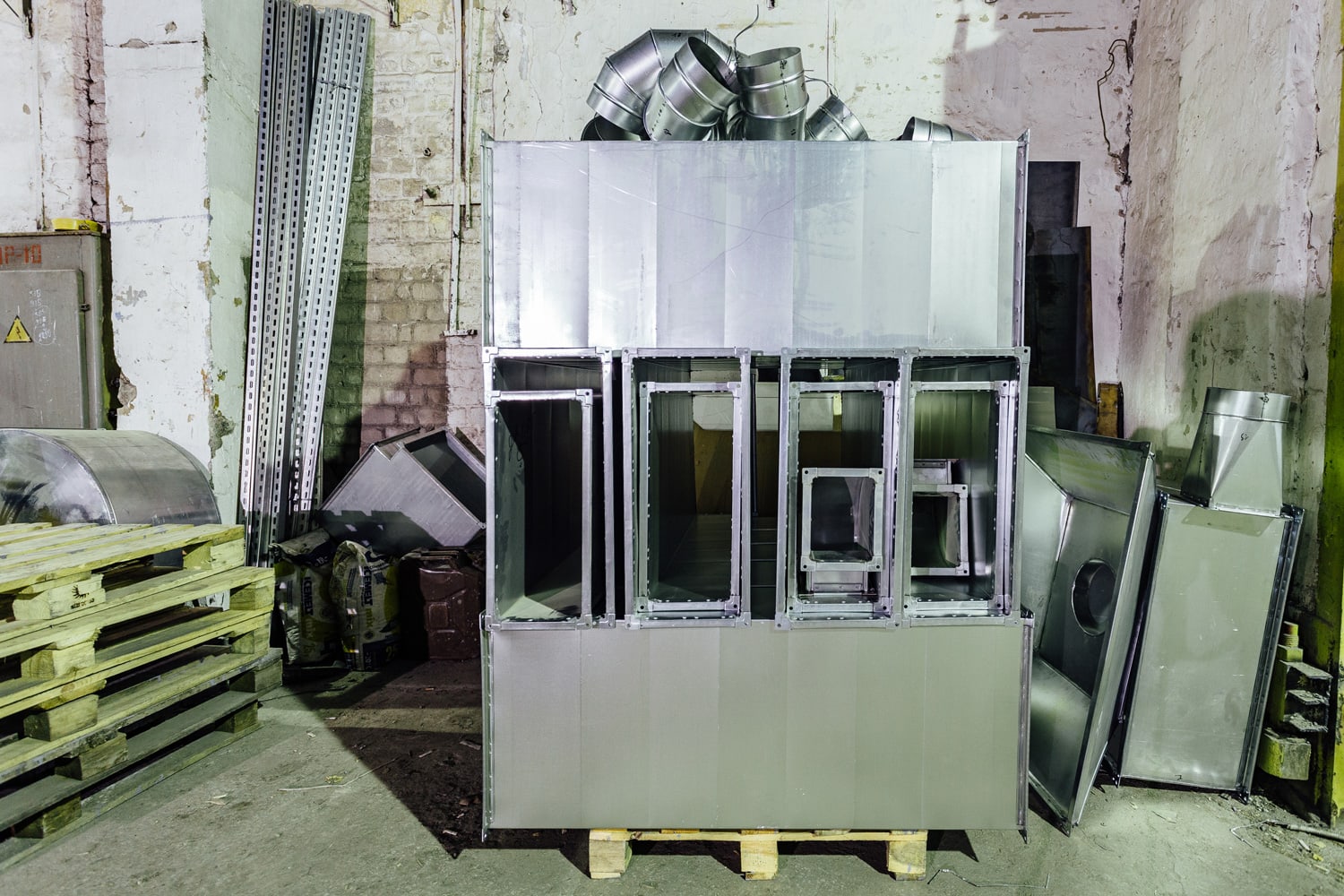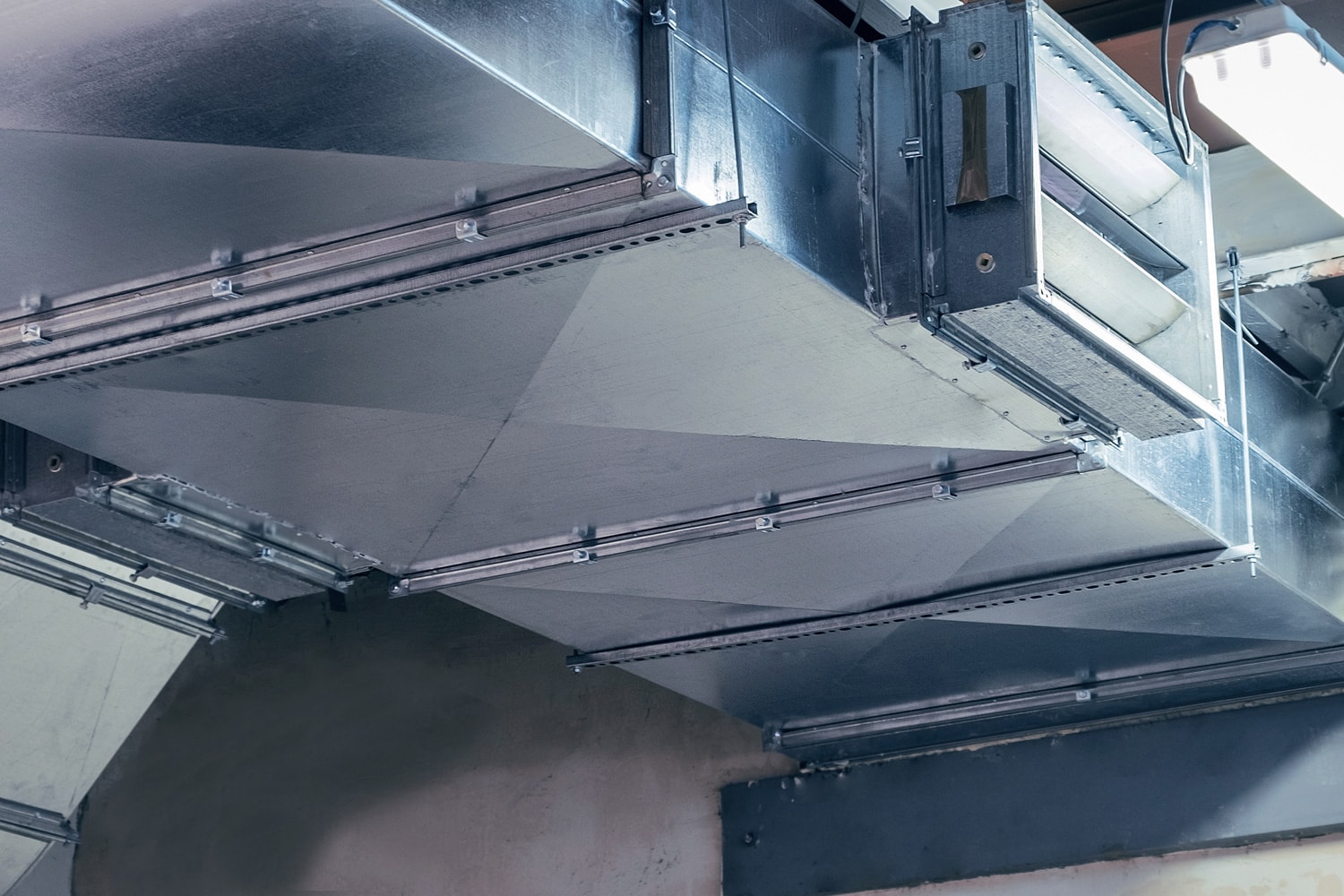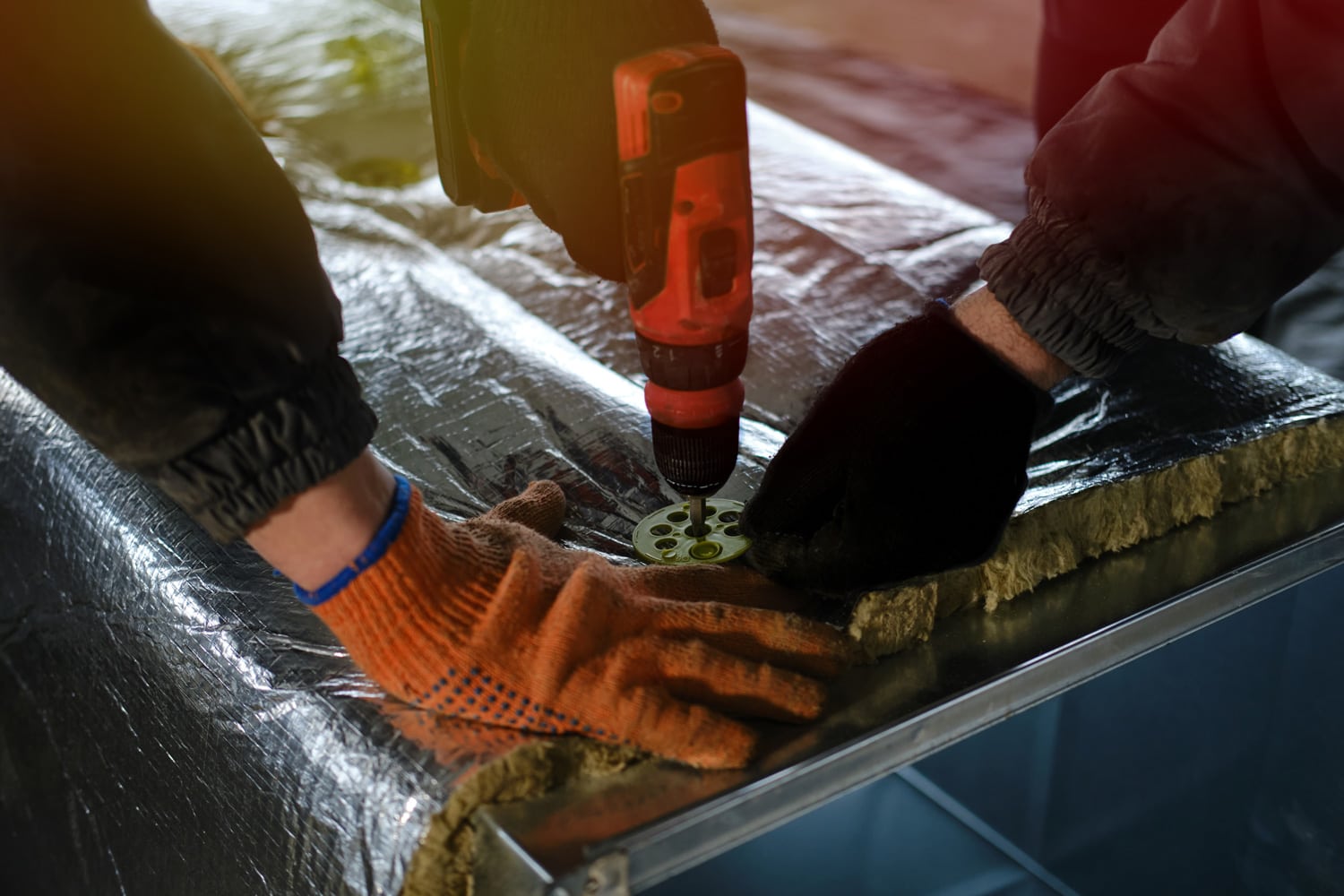A properly insulated ductwork will ensure that your home will get the desired temperature for the occupants. Insulation can also lead to savings in your electric bill.
There are two types available for ductwork, but a rectangular design is a popular choice because it allows for better sealing. We've researched how to add insulation to rectangular ductwork so your home can benefit.
It is easy to insulate rectangular ductwork. Here are the steps to follow:
- Check the ductwork to see if there are leaks.
- Ensure that the surface is clean. You can wipe it and wait for it to dry.
- Keep safe by wearing protective equipment.
- Get the measurement of the ductwork to get the correct material.
- Wrap the insulation material around the duct. Secure it by the seam or put foam insulation.
We consulted design engineers, technicians, and contractors for details on properly insulating ductwork. Keep on reading this post, so you know how important it is to protect your duct.

How does ductwork function?
Ductwork refers to a system in a building or a house that supplies cooled or heated air to designated parts inside. When the cooled or heated air enters the room, the current air goes out into one of the ducts.
A grille covers the outlet of the ductwork. You can usually find air ducts on the floor, walls, or ceiling.

What are the different types of air ducts?
Air ducts come in round or rectangular shapes. These two types have advantages and disadvantages. Rectangular ductwork is more suited for low-pressure buildings. But it is also not suited for promoting the proper airflow.
The good thing with rectangular ductwork is that it can be sealed properly and can help in the efficient flow in the system.
On the other hand, you can use the round air duct for high-pressure operations. It allows for better airflow, for a more efficient operation. A round-shaped duct needs to be sealed heavily in its joints.
The contractor can recommend a suitable type for you, especially when you consider the dimensions and cost.
Why choose rectangular ductwork?
Rectangular ductwork is better suited for homes. This style also works best when space is limited because you can adjust the joints depending on the available space.
Also, the rectangular duct is durable and can be easily reinforced. It is more affordable to install as compared with the round design.
This ductwork has an end-to-end connection and longitudinal connection. It allows for one or two connections, depending on how the duct is fabricated.
What are the steps to insulate rectangular ductwork properly?

It is fairly easy to insulate rectangular ductwork. For large-scale projects, it would be better to hire a professional. But for small areas, you can do it yourself.
Here are the steps to follow for insulating the ductwork:
Check the ductwork to see if there are leaks
A leak in the ductwork will render the system inefficient. For one, you are letting out the cooled or heated air. Also, you are bringing in unclean air. If there are leaks, seal them first.
Ensure that the surface is clean - wipe it and wait for it to dry
You can use a clean cloth to wipe the surface. If you have enough time, you might want to include the vents in cleaning to keep the quality of the air inside your home clean.
Keep safe by wearing protective equipment
Debris or dust may fall on you as you wrap the insulation material around the duct. Better wear the right gear to prevent accidents. Some of the recommended equipment are goggles, protective clothing, and an appropriate face mask.
Click here to see these safety goggles on Amazon.
Get the measurement of the ductwork to get the correct material
When you measure, get the height and width so you can properly wrap the insulation around the duct. You can use an industrial knife, with a smooth blade, for cutting. Put some weight on the foam board so you can cut on it properly.
Click here to see this utility knife on Amazon.
Wrap the insulation material around the duct -secure it by the seam or use foam insulation
Use a recommended foil tape to seal. Wrap the foil tape completely around the seam. There should be no exposed parts of the duct to fully insulate. Do not use ordinary household tape because it will not hold for a long time.
Why is there a need to insulate ductwork?

The duct system is made of thin materials, making it necessary to insulate it. Experts say that some circumstances do not warrant insulation. But if you don't insulate, you will not maximize the heat or cold that the system can deliver.
In the long-term, insulating would be the better solution because you can preserve the system's energy. As such, you can get heated air or cooled air, depending on your need. When you maintain the energy, you also reduce your electric bill.
Insulating the ductwork also prevents condensation, which stops mold and mildew from forming. You don't want mold spores to spread in your household because these can cause skin irritation, nausea, or headaches.
Finally, the rectangular ductwork creates more noise when it is operational. Adding insulation lessens the noise.
You can also insulate other parts of the house. Read this post to know how.
What are the insulation materials for ductwork?

You might get confused with the insulating duct materials available for you. After all, it is important to get the right type to properly seal your ductwork. See which of these materials will work for you:
Fiberglass Duct Boards
Fiberglass duct board is effective in keeping glass fibers away from the air stream. It also keeps noise to a minimum. This duct board is formaldehyde-free. It also has an acrylic coating. It works best for rectangular ducts.
However, fiberglass duct boards can be quite expensive, which drives consumers away. It also tends to absorb moisture.
Polyethylene Bubble
Polyethylene bubble is efficient and durable. It is composed of a bubble pack with polyethylene inside, making it easy to carry. You also don't have to worry about moisture absorption when you use this material.
According to experts, you will need to provide two inches of space between the ductwork and the foil. It may sound complicated, but this method will produce great results.
Foil-backed Foam
Foil-backed self-adhesive foam is better suited for irregular-shaped ductwork because it is easy to install. It is thin but effective in muffling sounds. You can use this type of insulation together with the other materials.
Foil Tape
Foil tape seals the insulation properly. This kind of tape can withstand both heat and cold. It is made with acrylic adhesive, which is durable and guaranteed to stick to most surfaces for a long time.
Mastics
Mastics protect the insulation material. It is strong and flexible, which helps make the insulation material more durable. Mastics also protect the insulation from wearing out due to sunlight and UV rays.
Aside from that, the insulation material is protected against liquids. With these characteristics in mind, you can say that mastics work best for outdoor settings.
What are R-values?
When you look at the insulation materials that you can choose from, you might come across R-values. These values refer to the ability of the material to resist conductive heat flow. A material can insulate more effectively if it has a higher R-value.
The value also depends on the type, thickness, and density of the material. When you choose a particular insulating material, you could also calculate the R-values of all the layers.
The heat resistance capability of the insulation material would also depend on where you install it. As such, if you put the insulation material on ductwork, it will absorb more heat coming from joints or studs of the duct.
How long will insulation last on ductwork?

The insulation on the ductwork can last for 10 to 20 years, as long as it is installed properly. The fiberglass material can last up to 25 years, but the owner has to check if there is a breakage in the system.
On the other hand, foam installation can last a lifetime. Those who installed it may never have to replace it.
Whether the ductwork is in the attic or basement, there is a need to insulate the duct. In doing so, you will feel the benefits. When it's cold, the ductwork will send the needed heat to the room.
Final Thoughts
The ductwork in your home, including the rectangular-shaped duct, needs to be insulated. It may seem like an additional task, but it is very useful.
You will conserve energy and save on your bills in return. The rooms in your home will receive heated or cooled are, depending on the season.
Before you go, you may want to check out this post: "How To Insulate Garage Door For Summer To Keep Heat Out?"


